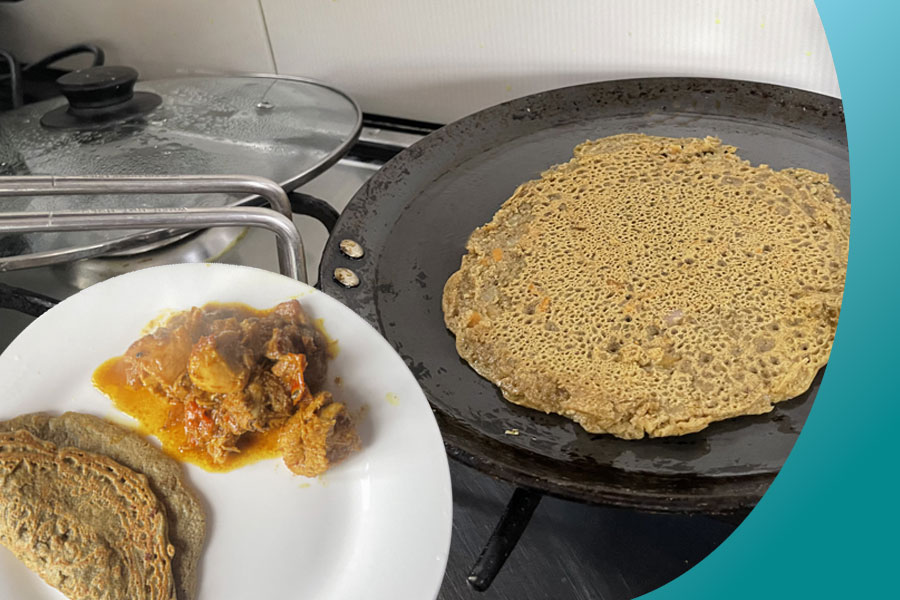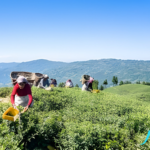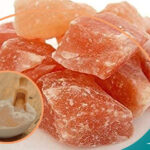Buckwheat bread, also known as Phaapar ko Roti, is a traditional bread many Nepalese people love. Buckwheat is an important food crop in Nepal, commonly grown in higher mountainous regions where rice cultivation is challenging. It has been a staple diet for centuries in some of Nepal’s most remote mountain regions. Buckwheat flour is used to make various dishes, including bread, dhindo, cakes, and finger chips.
In recent years, the popularity of buckwheat bread has grown significantly in Nepal, and for good reason. Buckwheat is gluten-free, making it an excellent alternative for people with celiac disease or gluten intolerance. Additionally, it is rich in nutrients like protein, fiber, and minerals, making it a healthy option.
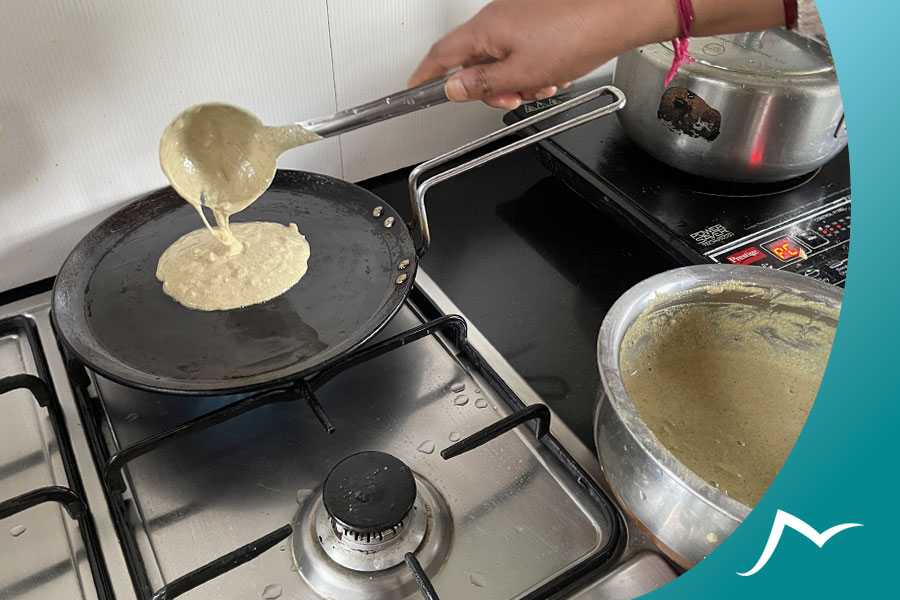
Buckwheat bread has become widely available in bakeries and restaurants across Nepal, and people of all ages enjoy it. It is often served with fresh vegetables, yogurt, and pickles and can be eaten on its own or as a side dish. Its unique flavor and health benefits have made it popular among health-conscious individuals and food enthusiasts.
History of Buckwheat Cultivation in Nepal
Buckwheat has a rich history of cultivation in Nepal. According to Nepal Agriculture Research, Buckwheat is a fast-growing annual herbaceous plant ready to harvest within 90-100 days of seeding. The plant bears bright green heart-shaped leaves, hollow stems, and beautiful pink and white flowers. When pollinated, it produces seeds, which change from green to red-brown upon maturity. The outer husks are removed, and the seeds are ground into flour.
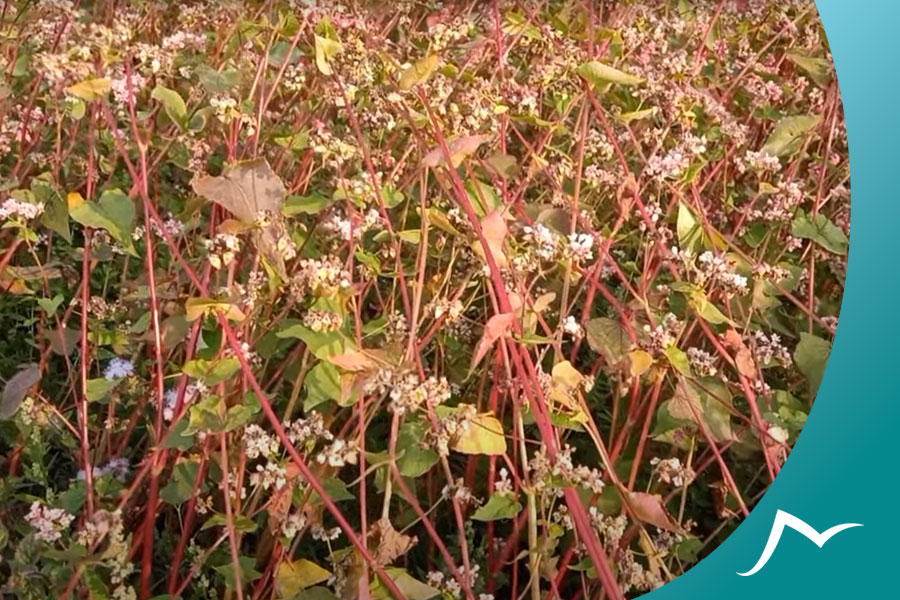
Buckwheat is an important crop in Nepal, commonly grown in higher mountainous regions and, to some extent, in Middle Hills, Inner Terai, and Sub-Terai areas. In Nepal’s most remote mountain regions, such as Jumla, Humla, Dolpa, Doti, Dadeldhura, Baitadi, Manang, and Mustang, local people have used Buckwheat as a traditional staple diet for centuries. Buckwheat is also widely grown in mid-hill areas such as Lamjung, Gorkha, Myagdi, and Parbat.
Buckwheat cultivation has been important in Nepalese agriculture and culture for generations. It has also been a source of income for farmers, especially those in remote mountain areas. Buckwheat cultivation in Nepal has increased in recent years due to its high nutritional value and adaptability to different climates. In addition, it is a resilient crop, not susceptible to disease or damage by insects, making it an ideal choice for farmers in areas with limited resources.
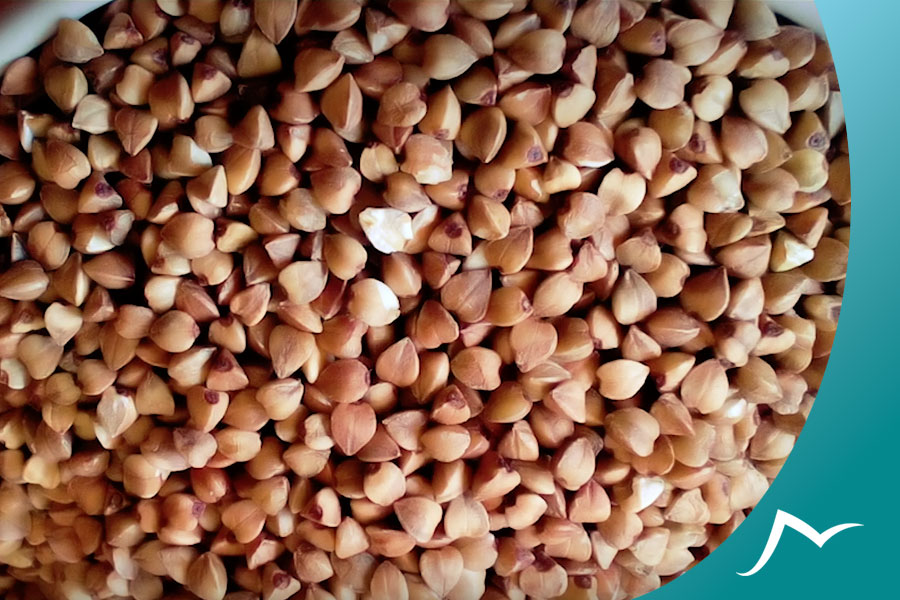
Buckwheat Bread in Nepal
Buckwheat bread (Phaapar ko Roti) is a traditional bread that Nepalese people have enjoyed for centuries. The method of making this bread is simple and traditional. The ingredients used in making Buckwheat bread are simple and readily available.
Buckwheat bread is often served with vegetables, yogurt, and buttermilk, making it a popular and healthy meal in Nepal. Vegetables such as radish, cucumber, and tomato are commonly used, while buttermilk and yogurt provide a refreshing contrast to the spiciness of the bread.
Recipe for Nepali-style buckwheat bread:
Ingredients
- 2 cups Buckwheat flour
- 1/2 tsp salt
- 1 tsp baking powder
- 1 1/4 cups water
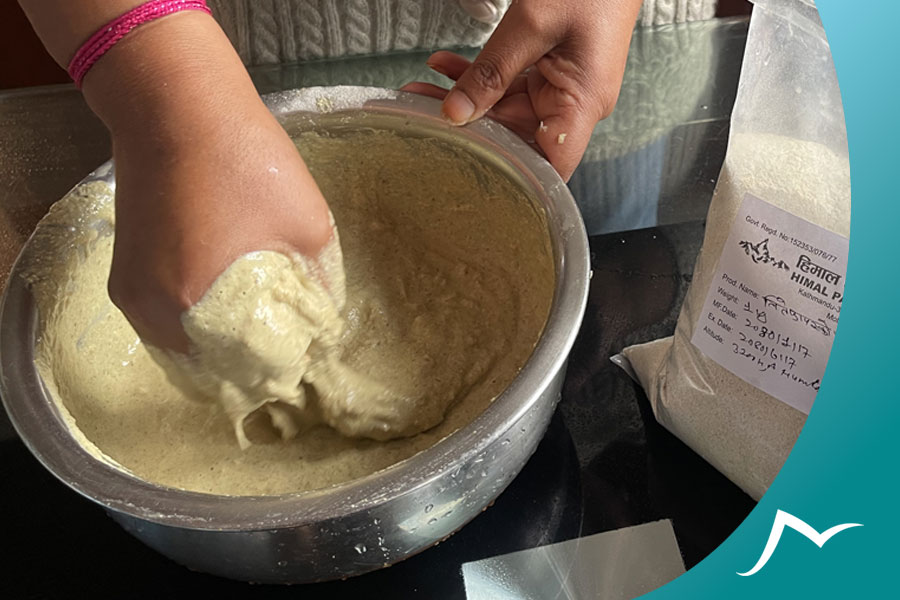
Instructions
- Combine the buckwheat flour, salt, and baking powder in a mixing bowl.
- Slowly add the water while mixing the ingredients until a thick batter forms.
- Heat a non-stick pan or griddle over medium-high heat.
- Pour a ladleful batter onto the hot pan and spread it evenly into a round shape.
- Cook the bread for 2-3 minutes until golden brown.
- Remove from the pan and repeat the process with the remaining batter.
- Serve the buckwheat bread hot with your favorite curry or vegetable dish.
Nepali-style buckwheat bread is a great gluten-free alternative to traditional wheat-based bread. It’s easy to make, nutritious, and delicious. Give this recipe a try and experience the unique taste of Nepali cuisine in your kitchen.
Serving suggestions and good combinations:
- Serve warm or at room temperature with a dollop of butter or ghee
- Pair with tomato pickle or Timmur pickle for a spicy kick
- Add a side of yogurt for a cool and creamy contrast
- Serve with steamed or sautéed vegetables for a healthy and balanced meal
Nepali-style buckwheat bread is a versatile and nutritious food that can be enjoyed in various ways. Feel free to experiment with different serving suggestions and find your favorite combinations.
Health Benefits of Buckwheat Bread
Buckwheat bread is not only delicious but also comes with many health benefits. Firstly, it is a rich source of protein, fiber, and essential minerals like magnesium, potassium, and phosphorus. Additionally, it is low in fat and cholesterol, making it an ideal choice for health-conscious people.
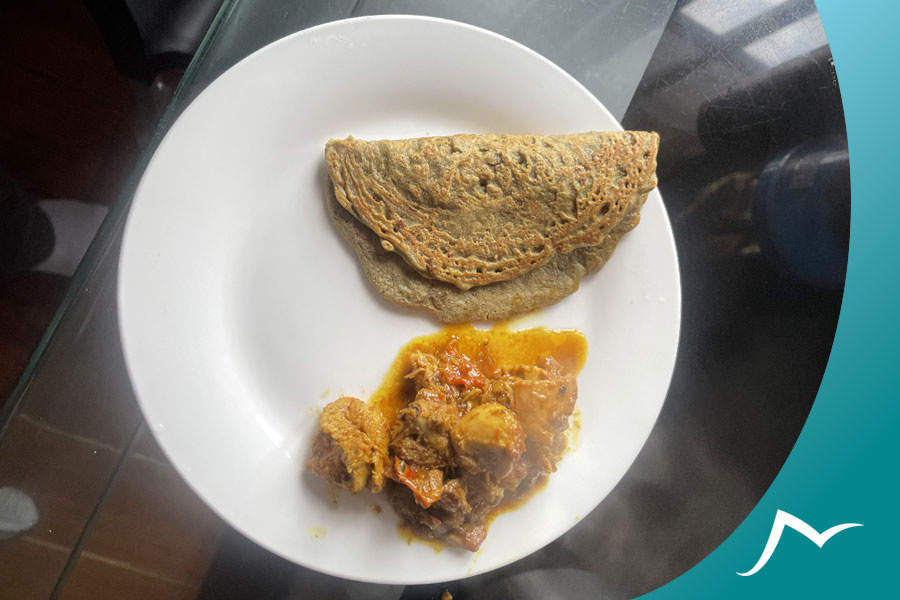
One of Buckwheat bread’s most significant advantages is it’s gluten-free. People with gluten intolerance or celiac disease can enjoy it without worrying about adverse effects. Buckwheat is not a grain, but a seed, which makes it a gluten-free alternative to wheat, rye, and barley.
Besides its nutritional value, Buckwheat also possesses medicinal properties that contribute to the health benefits of Buckwheat bread. Buckwheat is known to have anti-inflammatory properties, which can help reduce inflammation in the body. It is also rich in flavonoids, antioxidants that can protect the body from damage caused by free radicals.
Buckwheat has been traditionally used in Ayurvedic and Chinese medicine for its therapeutic benefits. It is believed to improve blood circulation, lower blood pressure, and reduce the risk of heart disease. Buckwheat is also known to regulate blood sugar levels and can be an excellent choice for people with diabetes.
The Growing Popularity of Buckwheat Bread in Nepal
Buckwheat bread has become increasingly popular in Nepal over the past few years and for good reason. One of the main reasons for this surge in popularity is the increasing demand for gluten-free foods in Nepal. Many people in Nepal have gluten intolerance or celiac disease and are, therefore, unable to eat foods that contain wheat or other gluten-containing grains. Buckwheat bread, being gluten-free, has become a popular alternative for these individuals.
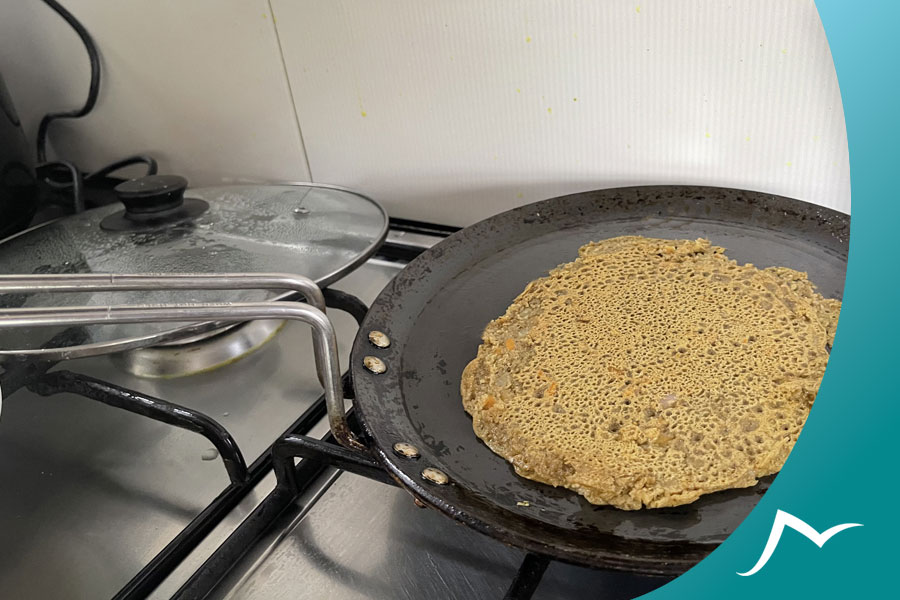
In addition to its health benefits, Buckwheat bread has cultural significance in Nepal. The traditional method of making Buckwheat bread has been passed down through generations of Nepali families and is often served as part of traditional meals.
Thakali restaurants, in particular, have played a significant role in popularizing Buckwheat bread in Nepal. Thakali cuisine is a traditional Nepali cuisine originating in the Thak Khola region of Nepal and is known for its unique flavors and health benefits. Numerous Thakali restaurants include Buckwheat bread as a staple dish on their menu, alongside dal bhat. This combination has gained popularity among both locals and tourists
In addition to Thakali restaurants, buckwheat bread is available in other restaurants and bakeries across Nepal. Its popularity has even led to new recipes, such as buckwheat pizza, pancakes, and chips. The growing popularity of buckwheat bread in Nepal reflects a shift towards healthier and more diverse dietary choices.
Buckwheat bread also offers numerous nutritional benefits. It is a rich source of fiber, protein, and essential minerals such as iron, zinc, and magnesium. Buckwheat itself is known for its medicinal properties, which contribute to the health benefits of Buckwheat bread. Traditional medicine has used it to treat various ailments, including high blood pressure, diabetes, and digestive disorders.
FAQs
What is buckwheat bread?
Buckwheat bread is a type of bread made with buckwheat flour, which is a gluten-free flour derived from the buckwheat plant.
Why has buckwheat bread become popular in Nepal?
Buckwheat bread has become popular in Nepal due to its health benefits, cultural significance, and restaurant availability. It is also a popular choice for those with gluten intolerance.
What are the health benefits of buckwheat bread?
Buckwheat bread has several health benefits, including a low glycemic index, high protein, and high fiber content.
What is the glycemic index of buckwheat bread?
Buckwheat bread has a low glycemic index, which means it does not cause a spike in blood sugar levels.
Where can I find buckwheat bread in Nepal?
Buckwheat bread is available in many restaurants and bakeries in Nepal, especially in Thakali restaurants specializing in traditional Nepali cuisine.
What dishes is buckwheat bread typically served in Nepal?
Buckwheat bread is typically served with dal bhat, saag, tomato pickle, Timmur pickle, and yogurt.
Can buckwheat bread be used to make other dishes besides bread?
Yes, buckwheat flour can make other dishes, such as buckwheat pizza and buckwheat pancakes.
Is buckwheat bread suitable for those with gluten intolerance?
Buckwheat bread is gluten-free and suitable for those with gluten intolerance.
Is buckwheat bread suitable for those with diabetes?
Yes, buckwheat bread is suitable for those with diabetes due to its low glycemic index.
Conclusion
Buckwheat bread is a staple in Nepali cuisine, popular for its unique taste and health benefits. The traditional method of making it involves fermenting the dough, which results in a tangy flavor and increased nutritional value. Buckwheat bread is rich in vitamins, minerals, and antioxidants and is an excellent choice for those with gluten intolerance or diabetes due to its low glycemic index.
Thakali and other restaurants serve buckwheat bread as a staple item on their menu, and its popularity has led to the creation of new recipes like buckwheat pizza and pancakes. With the growing demand for gluten-free and healthier foods, buckwheat bread has the potential to gain popularity outside of Nepal.
Buckwheat bread is a delicious and nutritious alternative to wheat-based bread, with a rich history and cultural significance in Nepali cuisine. Its popularity reflects a broader trend towards more diverse and health-conscious dietary choices. Its potential for wider adoption suggests that it may soon become a staple in other cuisines worldwide.
